Let me let you in on a little secret: Many financial advisors have no clue what they’re talking about. They’ve just been given a basic course on investing and then been told to sell the high cost funds and life insurance products that their firm is selling. Their interest is to get you to buy their high-load mutual fund and pocket their commission. In a year or two they’ll then try to get you to sell that fund and buy whatever they are selling at that time. It is therefore important as you take your journey to financial independence to learn at least enough to understand the things into which you’re investing.
(Note, this post contains affiliate links. This means that we make a small advertising fee when you click through a link and buy something on Amazon. This costs you nothing extra and keeps these articles free for you.)
One area where many financial advisors are clueless is in the area of asset allocation for risk reduction. In particular, allocating investment money between stocks and bonds. Often they will talk about investing some portion of a portfolio into stocks and then putting a portion, considered the “safe” portion, into bonds. A rule-of-thumb, in fact, is to hold a percentage of a portfolio in bonds equal to one’s age with the rest in stocks. The idea here is that as one gets closer to retirement one can no longer afford the risk of the volatility of the stock market and therefore one should retreat to the safety of bonds. This idea was popularized by John Bogle, founder of Vanguard and purveyor of low-cost index funds. To learn more about his philosophy, check out The Little Book of Common Sense Investing: The Only Way to Guarantee Your Fair Share of Stock Market Returns
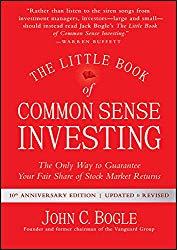
Many of the target-date mutual funds perform this function for the investor. If you buy a fund that is designed for someone 40 years from retirement, like a 2060 target date fund, it will be invested about 80% in stocks. If you buy a fund for those who are planning to retire in 2020, it will be invested about 40-50% in bonds and fixed-income assets. (Note, “fixed-income” refers to investments that pay out a lot of cash each year, such that the amount of income you get from them is relatively “fixed,” as opposed to investments where you make money by selling them for a higher price later. A bond is one type of a fixed-income investment.) The actual amounts of bonds that these target-date funds hold varies by fund, and some use more exotic derivatives to hedge positions.
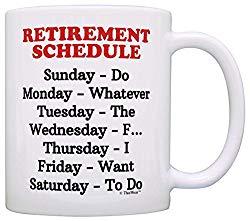
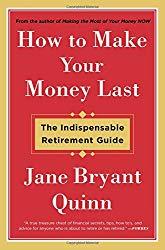
FIREd by Fifty: How to Create the Cash Flow You Need to Retire Early
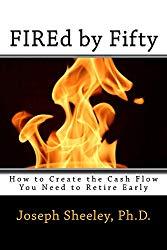
In general it is true that portfolios of bonds, or mutual funds of bonds, will be less risky than portfolios or funds of stocks. This is for two reasons. The first is that a bond by its nature pays a substantial interest rate. This is because a bond is a loan to a company (or government) and therefore the company pays interest during the life of the loan. Because the interest rate goes up if the price of the bond goes down, people will be more likely to buy the bond as it declines in price and therefore there is a natural amount of support for the price. Bonds will therefore not go down as far during recessions as will stocks. (If you’d like to learn more about the risks of stocks and bonds, as well as investing in general, please check out the SmallIvy Book of Investing: Book1: Investing to Grow Wealthy

The second reason is that bonds, also by their nature, have fixed lifetimes, at the end of which the investor will be made whole. When the bond matures, typically after a period of about 20 years, whomever holds the bond will be repaid the original price of the bonds (typically $1000 per bond). Market forces may drive the price all over the place, but in the end the company will pay whomever is holding the piece of paper $1000. With a stock there is no guaranteed rate – it is always up to whatever the market is willing to pay. For this reason the difference between the market price and the pay-off price for a bond tends to shrink as a bond nears maturity (because the closer you come to the maturation date, the more likely the investor will receive the face value of the bond)

Before going out and loading up on bonds, however, one must be aware that not all bonds are created equal, and there are some specific risks in buying bonds. One must remember that a bond is a loan to a company. If the company goes bankrupt or simply decides that they will not be able to pay back the bonds, an investor can lose the whole value fo the bond. While the bond holder generally has first rights to the assets of a company when it goes bankrupt (GM bonds were an exception that sent the shivers down the backs of bond buyers), in general there are usually not many assets to be had. Typically one can expect to receive $30 or so from a $1000 bond.


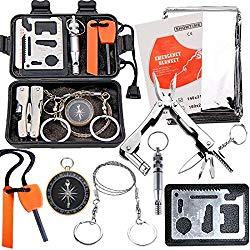
Get Outdoors Today
Bonds in companies that are more risky (more likely to default) also will tend to fluctuate in price more than those in companies that are more stable and reliable. Companies that have financial troubles and become more of a risk will also see their bond prices decrease rapidly as investors demand a greater interest rate before they will purchase the bonds. Remember that the lower the price, the higher the effective interest rate the bond pays (because the actual amount paid is fixed), so bonds will go down in price when investors require a higher interest rate before making a purchase.
Another risk that bonds face are due to changes in interest rates. Whenever interest rates go up bond prices will tend to go down. At times like the present where interest rates are at historic lows it seems that the likely direction of bond prices will be down since interest rates will not stay this low forever. Interest rates on longer-term bonds, in fact, have already begun to rise as investors expect interest rates to be higher in the future.
So how does one tell if the bond he is buying is more risky than other bonds or even blue chip stocks? The interest rate is a key indicator. Because of the wonders of market pricing, the relative price of a bond (and conversely the interest rate paid) will be set based on the perceived risk, taking into account all public information, of default. This means that a bond that pays a higher interest rate will be more risky than one that pays a lower one.
In general there are a set of bonds in solid companies that are considered to be of low risk. These are called “investment grade bonds” and will have good marks from the rating agencies. These bonds will all be paying the lowest interest rates, but these bonds are very unlikely to default. These bonds will also be priced near par value of $1000 (or $1.00 in the bond tables).
Bonds that are at more risk of default will pay interest rates several percentage points above the investment grade bonds. These bonds are called “junk bonds.” If investment grade bonds are paying 6% interest, junk bonds may be paying 10% or more. A bond that is trading at $500 may be paying 15% or more, but people obviously are not expecting the bond to mature. At 15%, one would need for the company to continue to pay the interest rate for about 6 years before defaulting to gain one’s money back. In some cases these companies do continue to pay and their price will eventually reach $1000 if the bond matures. This leads in both a good return in interest and also a good return from the appreciation in price. Many times, however, the market knows what they are doing and these types of bets will not pay off.
To ask a question, email [email protected] or leave the question in a comment for this blog. Also, please follow us on Twitter @Smallivy_SI.
Disclaimer: This blog is not meant to give financial planning advice, it gives information on a specific investment strategy and picking stocks. It is not a solicitation to buy or sell stocks or any security. In addition the writer of this blog is not an accountant and writings should not be taken as tax advice which should be left to a CPA. Financial planning advice should be sought from a certified financial planner, which the author is not. All investments involve risk and the reader as urged to consider risks carefully and seek the advice of experts if needed before investing.
